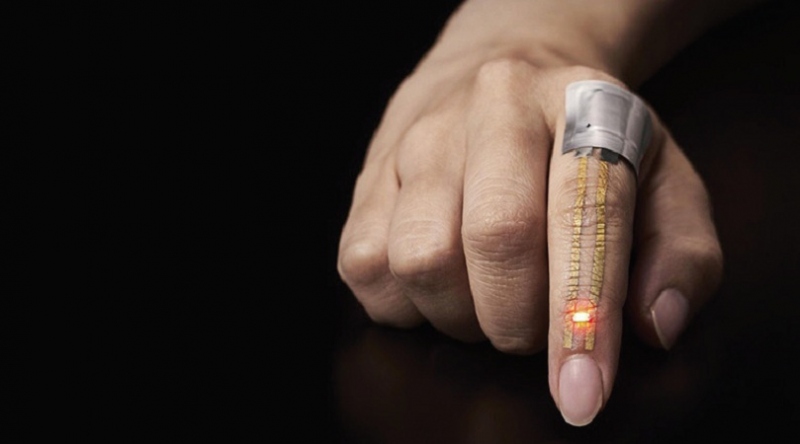Paving the way for smart prosthetics and skin grafts, scientists have now created a new silicone 'skin' that mimic the human body's lightning-fast response to pain

SKIN IN THE GAME
Prosthetics significantly improve an amputee’s quality of life, but they still lack the ability to sense danger A prosthetic hand does not sense when it’s placed on a hot surface or on something sharp The new electronic artificial skin reacts to pain stimuli just like real skin, and paves the way for better prosthetics, smarter robotics and non-invasive alternatives to skin grafts Another unique application could be smart gloves that could provide precise feedback from a surgeon’s hands when palpating tissue.
Skin is our largest organ, made up of complex sensors constantly monitoring for anything that might cause us pain. Now, a new technology replicates that – electronically.
A new electronic artificial skin reacts to pain stimuli just like real skin, and paves the way for better prosthetics, smarter robotics and non-invasive alternatives to skin grafts.
The prototype mimics the body’s near-instant feedback response and can react to painful sensations with the same lighting speed at which nerve signals travel to the brain. It mimics human skin, both in texture and in how it responds to pressure, temperature and pain.
Human skin senses things constantly, but our pain response only kicks in at a certain threshold. Once this threshold is breached, electric signals are sent via the nervous system to the brain to initiate a pain response.
You don’t notice when you pick up something at a comfortable temperature. But touch something too hot, and you’ll almost instantly recoil. That’s our skin’s pain-sensing system in action.
Helping hand
This new pain-sensing electronic skin is a crucial step towards the development of “smart prosthetics” featuring sophisticated feedback systems.
Prosthetics significantly improve an amputee’s quality of life, but they still lack the ability to sense danger. A prosthetic hand does not sense when it’s placed on a hot surface, while someone with a prosthetic arm might lean on something sharp but won’t realise the damage being caused.
Technology that provides a realistic skin-like response can make a prosthetic much more like a natural limb.
With further development, electronic skin could also potentially be used for skin grafts, in cases where the traditional approach is not viable.
Created by building on previous breakthroughs, the electrical output from the brain-mimicking circuit is like the nerve signals that initiate a motor response (such as moving your hand away) in the human pain response.
To use the silicone skin for real, this would need to be connected to nerve endings or apparatus that could initiate a motor response.
The electronic skin brings to reality the threshold-based responses to pain, both in the way the skin reacts differently to pain above a certain threshold and how it takes longer for skin to “recover” from something that’s more painful. This is because stronger stimuli generate more voltage across the brain-mimicking circuit.
This threshold can be modified in devices to mimic the way injured skin (such as sunburnt skin) can have a lower pain threshold than normal skin. The electronic skin can also be used to increase sensitivity, which could be particularly useful in sports and defence as well as for skin grafts.
Another unique application could be smart gloves that could provide precise feedback from a surgeon’s hands when palpating tissue.
The silicone skin will need further development to integrate the technology into biomedical applications. But the fundamentals – biocompatibility and skin-like stretchability – are already there.The next steps are working with medical researchers to make this even more “skin-like”, and to figure out how best to integrate it with the human body.